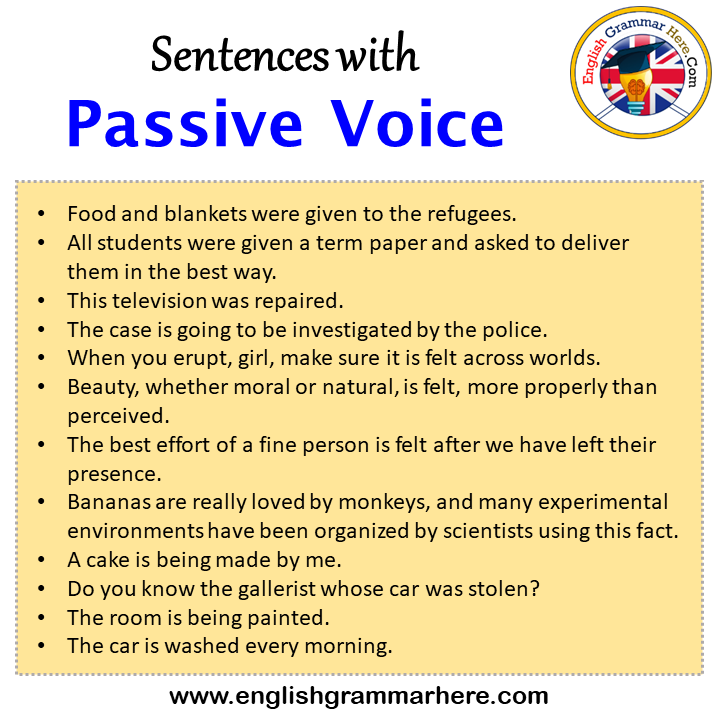Passive voice is a grammatical construction where the subject of the sentence is the recipient of the action rather than the doer. This can sometimes lead to confusion or awkwardness in writing. By practicing exercises that focus on passive voice sentences, you can improve your understanding and usage of this structure.
Many writers struggle with passive voice, as it can make sentences less direct or engaging. However, it is still an important tool to have in your writing arsenal. By practicing exercises that specifically target passive voice construction, you can become more comfortable and adept at using it effectively.
Passive Voice Sentences Exercises
1. Rewrite the following active voice sentences in passive voice:
- a) The dog chased the cat.
- b) She will finish the project by tomorrow.
- c) The teacher gave the students a quiz.
2. Identify the passive voice sentences in the following paragraph and rewrite them in active voice:
“The cake was baked by my sister. The book was read by the entire class. The report will be submitted by the end of the week.”
3. Create your own sentences using passive voice and then rewrite them in active voice. This exercise will help you understand the differences in tone and structure between the two constructions.
4. Practice identifying passive voice in longer passages of text, such as articles or essays. By recognizing passive constructions in context, you can learn how to effectively revise them for clarity and impact.
5. Challenge yourself by writing a short story entirely in passive voice. This exercise will push you to think creatively about how to convey action and emotion without relying on the typical subject-verb-object structure of active voice sentences.
By engaging in these exercises regularly, you can improve your mastery of passive voice sentences and become a more versatile and skilled writer.
Overall, practicing exercises that focus on passive voice sentences can help you become more comfortable and proficient in using this grammatical structure. By actively engaging with different examples and scenarios, you can enhance your writing skills and create more dynamic and engaging content.
